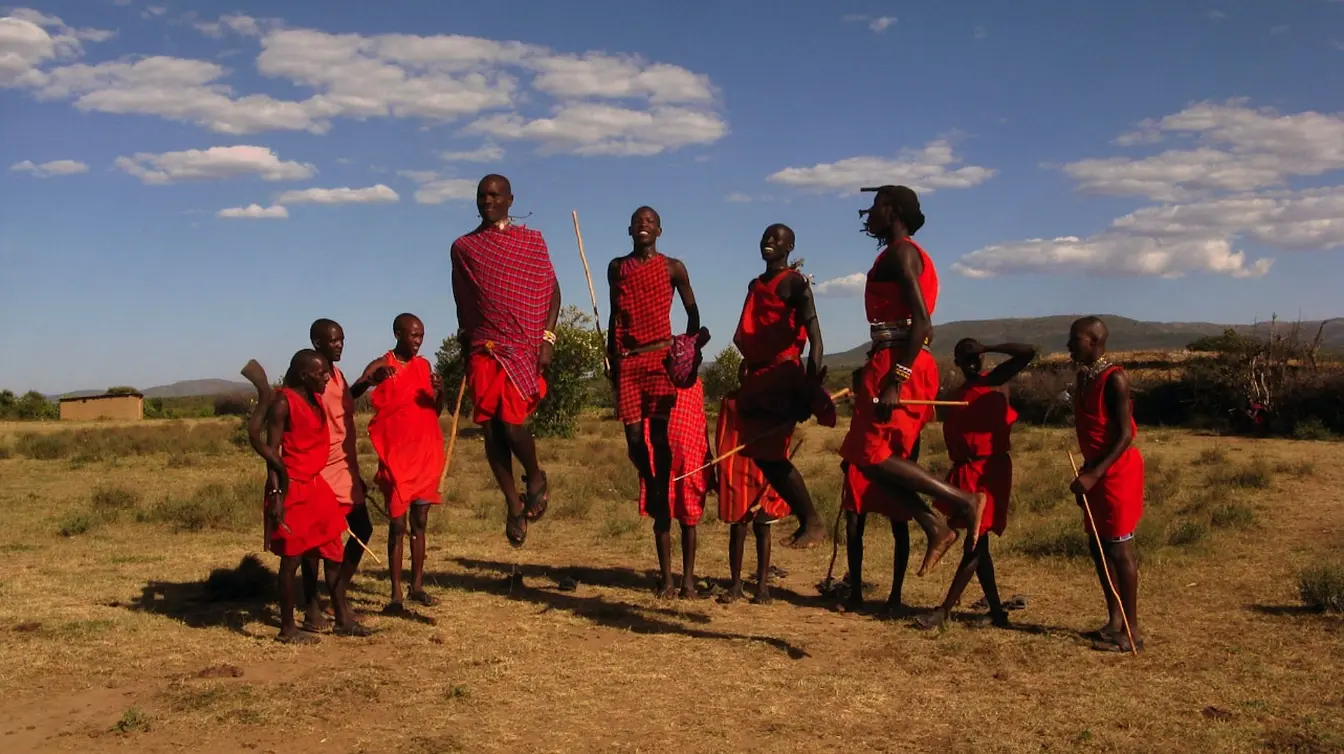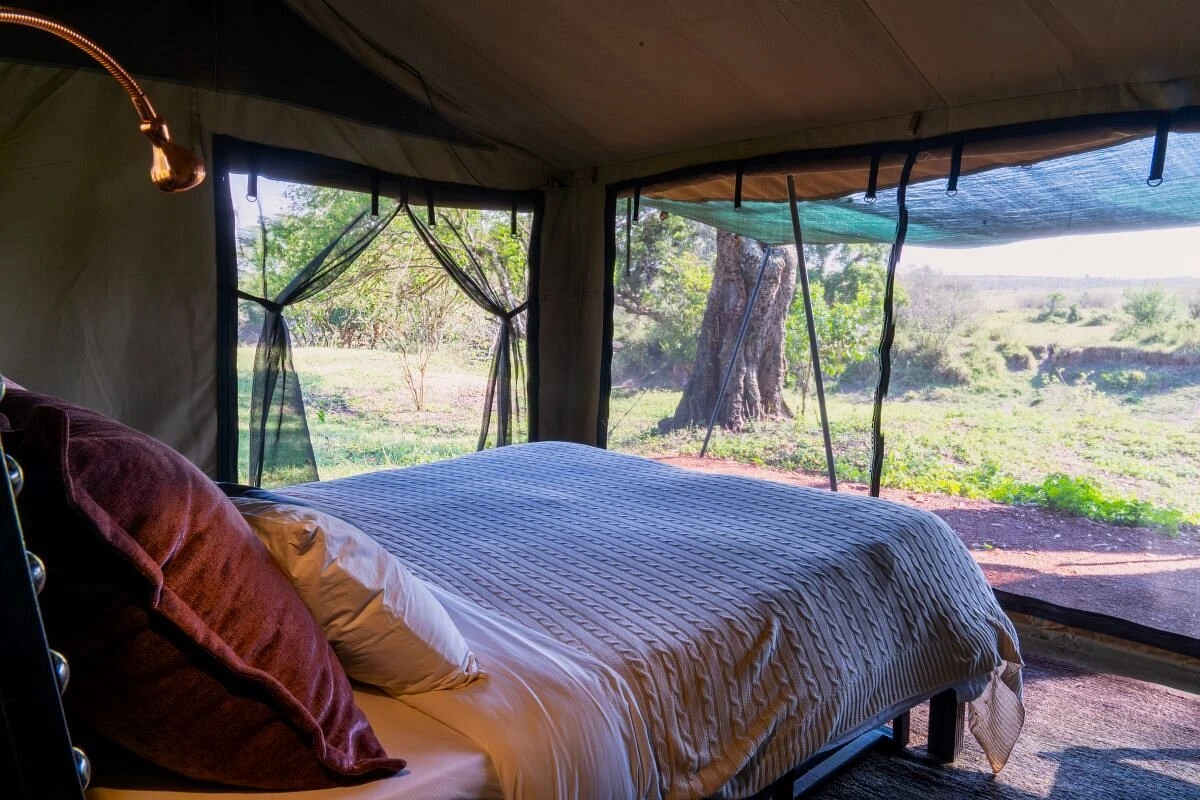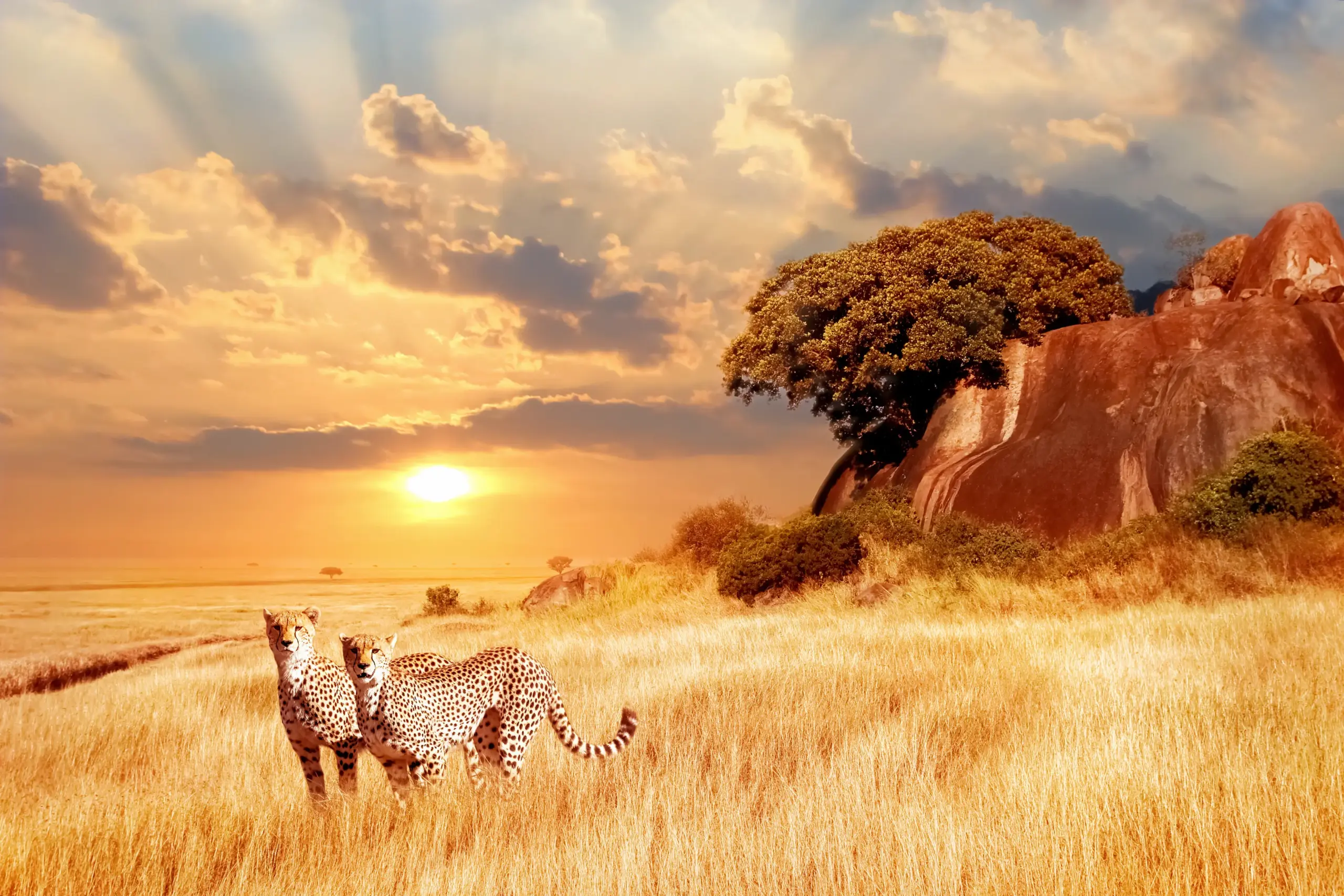About Masai Mara and Outlying Conservancies
A Masai Mara safari is a front-row seat to nature’s greatest spectacle. Venture into the heart of the Masai Mara, where the thundering hooves of the Great Wildebeest Migration paint an unforgettable scene and Africa’s formidable big cats reign supreme. Greet the sunrise from a hot air balloon, drifting over golden plains teeming with wildlife, or embrace the thrill of a jeep safari through the Masai Mara National Park and its conservancies. Follow hidden trails where elephants graze in quiet majesty and cheetahs chase their next conquest. Every turn in this untamed paradise holds a new story, captivating adventurers and wildlife lovers alike.
Masai Mara Travel Guide - Video by James Gatheru, Our CEO
The quintessential African safari dream
Ask anyone to picture an African safari, and their imagination will likely conjure the same exhilarating scenes—wildebeest surging across endless golden plains, lions prowling through the tall grass, and the electrifying tension of a predator in pursuit. Nowhere else brings these visions to life quite like Kenya’s Masai Mara conservancies and the iconic Maasai Mara National Reserve, where the drama of the wild unfolds in breathtaking clarity, day after day.
Why visit the Masai Mara Reserve?
Imagine yourself in the heart of an endless golden savannah, where the horizon seems to dissolve into the sky. Just ahead, herds of wildebeest and zebras move in unison, their presence a breathtaking testament to nature’s rhythm. This moment is both awe-inspiring and grounding. The greater Maasai Mara ecosystem is a sanctuary for wildlife, home to the world’s densest population of large mammals- over 40% of Africa’s most iconic species roam freely here. But the Mara is more than its sweeping landscapes. Beyond the famed national reserve, a network of community conservancies, Maasai villages, and group ranches add depth to its rich cultural and ecological tapestry.
Masai Mara Coordinates
Masai Mara conservancies
The Greater Masai Mara is more than just the famed national reserve- it’s a vast wilderness that extends into privately managed conservancies like the Mara North Conservancy and the Mara Triangle. Unlike the main reserve, these wildlife conservancies are owned by Maasai families who lease their land to safari camps, creating a unique conservation model. This partnership not only safeguards wildlife but also uplifts local communities, as lease payments fund schools, healthcare, and infrastructure projects. Occasionally, you may spot Maasai herders guiding their cattle through these lands, a centuries-old tradition coexisting with modern conservation. Once degraded by overgrazing, these areas are now thriving havens for wildlife, proving that sustainable tourism can benefit both nature and people. Explore the different Masai Mara conservancies and their impact.The Great Migration in Masai Mara
Between July and October, the Masai Mara becomes the epicenter of one of nature’s greatest marvels—the Great Migration. This breathtaking event sees over 1.5 million wildebeest, zebras, and antelopes surge across the savannah, moving from the Serengeti into the Masai Mara in search of fresh grazing lands and water. Exclusive to these two ecosystems, the migration is an unmissable experience for any Kenya safari adventurer. If you’re planning to witness this iconic wildlife drama, here’s what to expect: Mid-July: The first wave of herds reaches the Masai Mara, braving the treacherous Mara River. Here, formidable predators like crocodiles and lurking hippos turn the crossing into a life-or-death struggle, making this phase one of the most intense moments of the migration. September – October: By this time, the Masai Mara is teeming with wildebeest and zebras reveling in the rewards of their daring expedition. The golden grasslands stretch endlessly, dotted with grazing herds, a living testament to the resilience and rhythm of nature in the Masai Mara National Reserve. For more insights, explore the Great Migration in KenyaAfrican Big Cats
When the Great Migration sweeps across Africa, the savanna’s top predators enter a thrilling season of abundance. With a moving feast of wildebeest and zebras at their doorstep, lions, leopards, and cheetahs flourish, seizing every opportunity to hunt. This seasonal bounty strengthens prides in the Masai Mara, where lionesses remain the backbone of their families while dominant males fight to keep their reign. As dusk falls, the guttural roars of territorial males echo through the night, a primal warning to rivals. For the best chance to witness a lioness in pursuit, venture out at dawn or dusk—nature’s most dramatic moments often unfold in the golden light. Discover more about the wildlife in the Masai Mara.Masai Mara Ecosystem and landscape
The Masai Mara owes its name to the indigenous Maasai people, the region’s longtime stewards. In their native Maa tongue, “Mara” means “spotted”—a fitting tribute to the rolling plains sprinkled with clusters of short, bushy trees. Spanning roughly 1,510 square kilometers, this vast wilderness forms part of a greater ecosystem, seamlessly connected to Tanzania’s Serengeti in the south, while Maasai-owned ranches encircle it to the north, east, and west. The lifeblood of the reserve, the Mara and Talek Rivers, weave through the landscape, their banks lush with vegetation, though much of the terrain remains open savannah dotted with iconic flat-topped acacias. The region experiences two distinct rainy spells: the heavier downpours arrive from April to May, while lighter showers grace the land between November and December. Throughout it all, the Maasai people continue to thrive, playing a vital role in the conservation of this extraordinary landscape.History of the Masai Mara
For nearly fifty years, the Masai Mara has stood as a haven for wildlife. Established in 1961, it originally spanned just 520 square kilometers, encompassing what is now known as the Mara Triangle. Over time, conservation efforts led to its expansion, and in 1974, it was officially designated a National Reserve. However, sections of the land were later returned to local Maasai communities, shaping today’s vast Mara ecosystem, which stretches across 1,510 square kilometers. For generations, the Maasai have relied on these lands for cattle grazing and sustenance. With the creation of the reserve and surrounding conservancies, they’ve been able to uphold their rich cultural traditions while benefiting from improved livelihoods.Your Masai Mara Adventure Awaits—Let’s Make It Unforgettable
The Masai Mara is calling, and every moment here is a story waiting to be told. Whether you’re witnessing the raw power of the Great Migration, tracking majestic big cats, or soaring over golden plains in a hot air balloon, this is more than just a safari—it’s a once-in-a-lifetime experience. Ready to plan your dream adventure? Reach out to us today and let’s craft a safari that’s as extraordinary as the Masai Mara itself.- Email: [email protected] | [email protected]
- WhatsApp/Phone: +254 748 258880
You Might Love The following:
Welcome to AjKenya Safaris
Thanks for stopping by! We’re excited to help you plan an unforgettable safari.
- Phone: +254 748 258880
- WhatsApp: +254 748 258880
- Email: [email protected]
- Email: [email protected]





